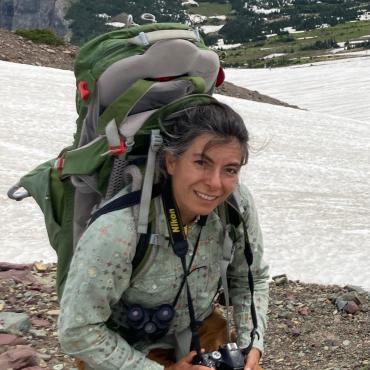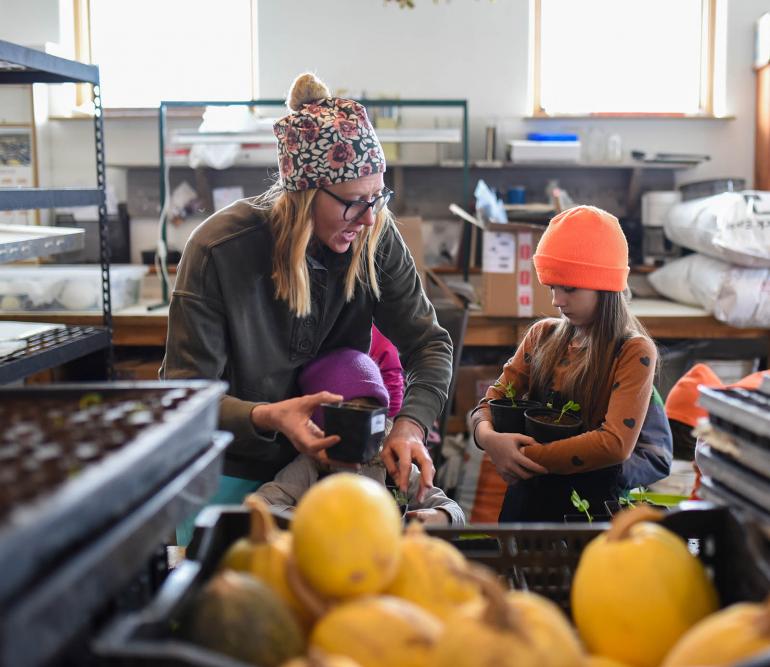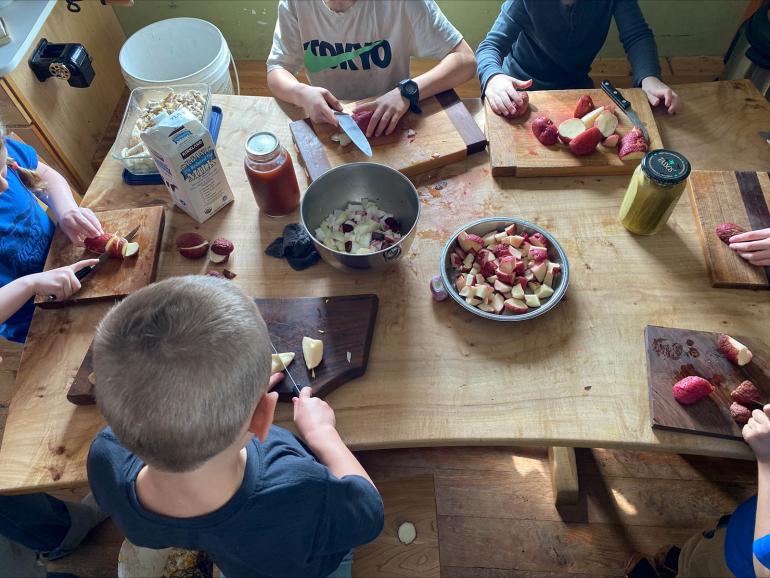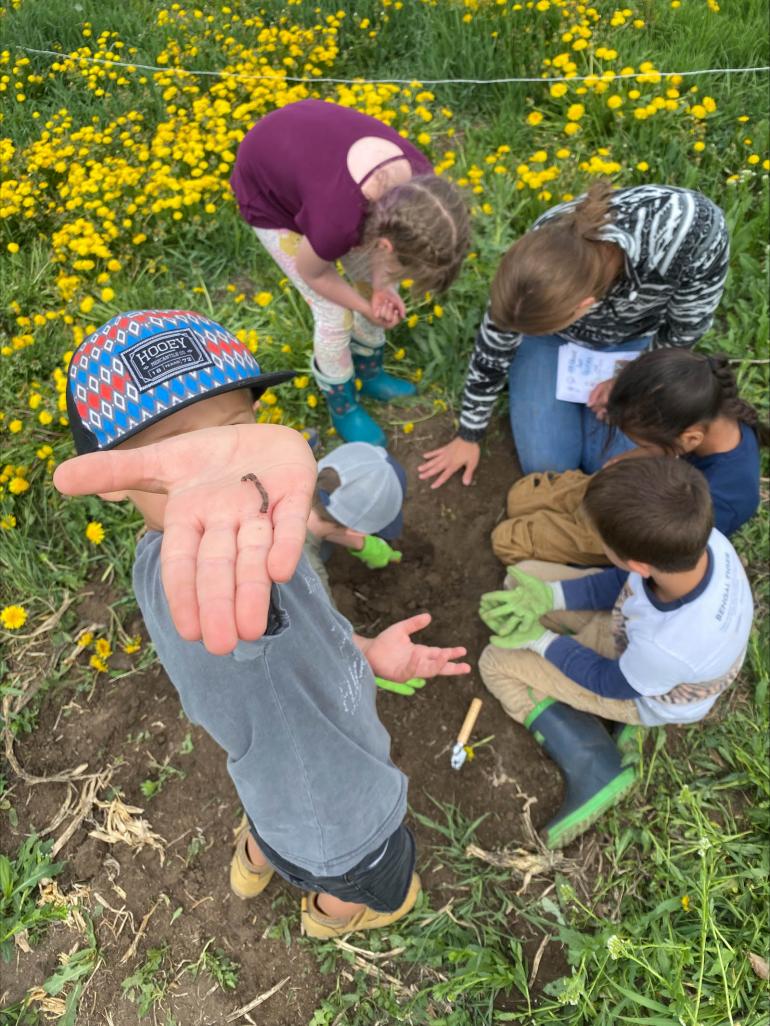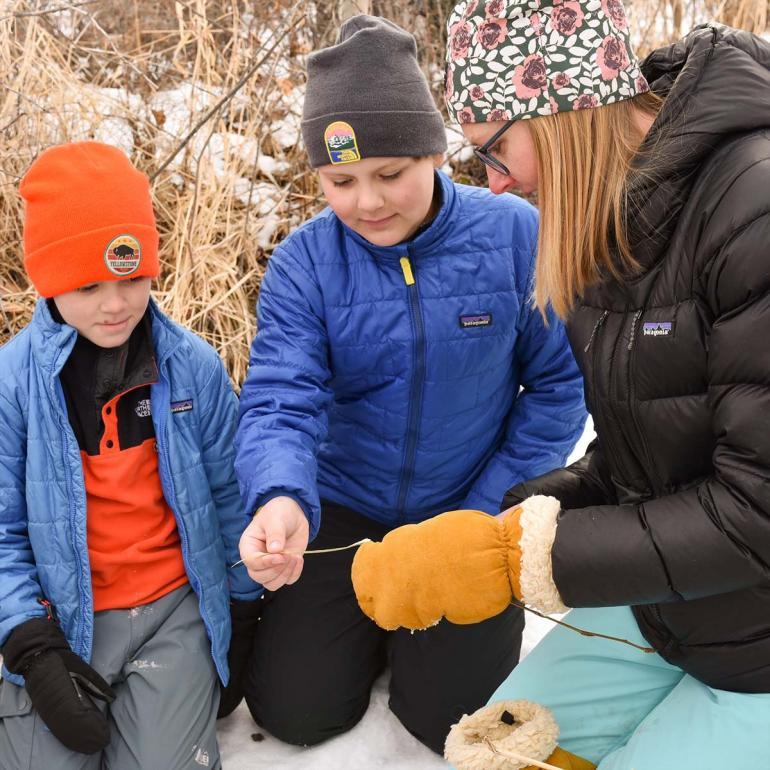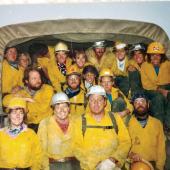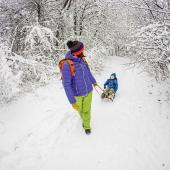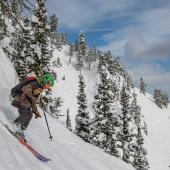Wild Wonders
An outdoor-based education model.
Slide a barnyard scene across a kindergarten desk, and most kids can pick out the chicken. But swap out the desk for a creekside breeze, and Lindsey Vose believes that the right blend of core academics and hands-on projects—grounded in the outdoors—can inspire even the youngest learner to go one step further. She believes that kids should be able to pick out the chicken, then recognize poultry breeds, pinpoint behaviors, feed birds in a real coop, muck out the pen, and calculate its perimeter and area—all before calling it a school day.
Outdoor experience forms the backbone of learning at Wild Wonders Farm-Inspired Education. Immersed in nature, Lindsey teaches students from kindergarten through middle school how to read and spell, multiply and divide, and also how to garden, cook, sew, start a campfire, build a greenhouse, and identify a nuthatch & its nest. A little bit of dirt goes a long way. “We sit on the ground, on the farm, in the greenhouse, on a blanket, in the mud,” says Lindsey, who began her career as an elementary-school teacher in the public system. “Even in a public school, I’ve always been a sitting-on-the-ground kind of person.”
A robust education rooted in nature and community are core values that Lindsey prioritizes at Wild Wonders.
Wanting more than the standard curriculum taught in public schools, and seeking a professional sidestep, Lindsey worked part-time at a hybrid homeschool facility that offered families the flexibility of home-based learning without full responsibility for all the core studies. Then, when she landed in Bozeman in 2021 with her husband and two daughters, the outdoors became the core of family life. Confident in the vibrancy of the mountain community, she sampled homeschool options for her own children, sure she would find what she was looking for: a full-time school program, based outdoors, that blended academics with life skills. “It didn’t exist,” she says. “I couldn’t find it.”
Her struggle to find that niche drove her to carve out the opportunity she craved. “The community piece really stuck out for me,” she said. “What could I do for the community that went beyond the basic hybrid homeschool model? Especially for those who are new to Bozeman.”
A robust education rooted in nature and community are core values that Lindsey prioritizes at Wild Wonders. She debuted her dream with the 2022 school year on her backyard farm. Between the residential property and one day a week spent at neighboring Three Hearts Farm, the school maintains a daily, core routine of outdoor exploration through all seasons—garden to greenhouse, chicken chores to rabbit care, creek study to bird survey to sledding foray.
In February, the homeschool maven relocated her classroom space from her garage to a new headquarters off Jackrabbit Lane, within walking distance of her outdoor bases. Their new headquarters is a stepping-stone toward the goal of housing the permanent school on a farm, full-time, within a year. Until then, inspired by a study of photosynthesis, the children’s watercolor paintings of trees drape the walls beside bar graphs charting firsthand observations—snow depth on the farm, the number of different nest types at Lindsey’s homestead, the frequency of cow behaviors. A colossal, communal table anchors the room where children and teachers can learn together, or peel away to claim personal space on a floor cushion with a journal, a jar of markers, and a book on wood-crafts or wilderness survival.
'We talk about food, nourishing our bodies, the animals, how to respect them, the benefit of trees, oxygen, shelter.'
Children learn in different ways, says Lindsey; a setting that offers flexibility and individualized opportunity supports a child to absorb experience—a model equally applicable to outdoor learning. From a space where every bookshelf and cubby feeds a passion for outdoor exploration, comfort in the learning environment at Wild Wonders feeds a confidence to learn that launches each child into the world outside, year-round. “We’re on the farm or by the creek,” says Lindsey. “We talk about food, nourishing our bodies, the animals, how to respect them, the benefit of trees, oxygen, shelter.” Instead of eyeing math worksheets that drill story problems with no context, get hands-on, she says; get outdoors and count chicken eggs. Put on hats and mitts and group the seed cones off coniferous trees; weigh apples to can applesauce. “Connecting the learning through real-life, meaningful experiences is how kids remember things.”
Journals feature prominently in the outdoor-learning landscape, but demand a broad-minded teacher. “Writing is one of those funky things where people have different views,” says Lindsey. “You can correct everything with red marker and have the child do it again. But we want the creativity from the kids’ heads. If you stifle it from the beginning, you’ll never encourage it in the future.”
Lindsey feels strongly that fostering creativity into the future by empowering observation—outdoors as much as possible—prepares students for an adulthood in sync with real life, and in command of the confidence and flexible thinking essential to solving problems in a world challenged by climate and a growing human footprint
Through exploration rooted to place, and blending academics with life skills and a strong work ethic, Lindsey believes that children cultivate a respect for lives beyond their own.
“We use the journals whenever it seems right,” says Lindsey. “We take the journals outside.” A quick flip of pages reveals a child’s bright diagrams and doodles, with labels and arrows that bridge topics of structured study with personal interest: cover crops, bunnies, an afternoon slinging mud by the creek; the fall equinox; the parts of a tree. “Every day is different,” says Lindsey. “It’s directed by what they want. We spent the entire month of January on birds. We set up feeders in the yard, we learned everything we could possibly learn. That was all child-directed. Now we’re working with trees. It’s powerful when it’s brought on by the kids,” she continues. “The passion is so much stronger—for researching, observing, counting. Learn how to learn, Lindsey emphasizes, with choice, with context, for life. “Think back to school, to college, even. Every job you’ve ever had, you taught yourself skills as soon as you were there. You have to learn how to work without being spoon-fed. You have to be a self-starter, and that’s something I strive to impart to my students.”
One major key to nature-based learning, says Lindsey, is to make learning significant in the moment. Through exploration rooted to place, and blending academics with life skills and a strong work ethic, she believes that children cultivate a respect for lives beyond their own. “Caring for animals,” Lindsey stresses. “That’s huge. I want kids to feel they’re not just here to satisfy their own needs.”
“Planting gardens, harvesting and preserving foods. Working with wood, mastering handwork like knitting and embroidery. These are all real-life skills that do not fit the conventional curriculum, timetable, or testing standards of a public-school framework, so children have little exposure to them in that system. “Project-based learning in public schools is not a common thing. But when these skills form a part of your every-day,” she continues, “when they are part of your learning—when they are valued—then they become important.” With immersed outdoor learning, children gain new knowledge and experiences. “When it’s relevant,” Lindsey says, “when it’s based in doing, when it’s self-directed, the learning and the respect for nature become embedded.”
Small class size is a major focus, and Lindsey is not willing to give it up. She oversees 14 school-aged children from pre-kindergarten through third grade, but her goal is to teach 20 students this upcoming year, adding enrichment classes at the middle-school level to target specific life skills like canning, sewing, and watercolor painting. A new hire with a passion for early learning will focus on the younger students, establishing two experienced, accredited educators enabling differentiation in teaching. “I want to make sure we are able to meet the needs of all our kids,” Lindsey stresses. In addition, Lindsey plans to add experienced middle school teachers to her crew of educators.
The nature-based framework at Wild Wonders summons responsibility, from both teacher and student: tending farm animals, stewarding wild systems, gardening year-round to produce food, engaging with the features of both natural and built landscapes that all life—including us—need to thrive in the sprawl of homes and roads that shape our broader community. By empowering children with creativity, confidence, and context in the natural world, Lindsey feels she’s shaping a more purposeful adult. “I’m very intentional about creating the community of people who value these skills and this type of learning. I want our kids to be really successful human beings, and I want to be with my own kids, outside as much as possible. I’m trying to bring those things together. I’m instilling in them their place in this world.” Which, she believes, is a big part of what good teaching should strive to deliver.

